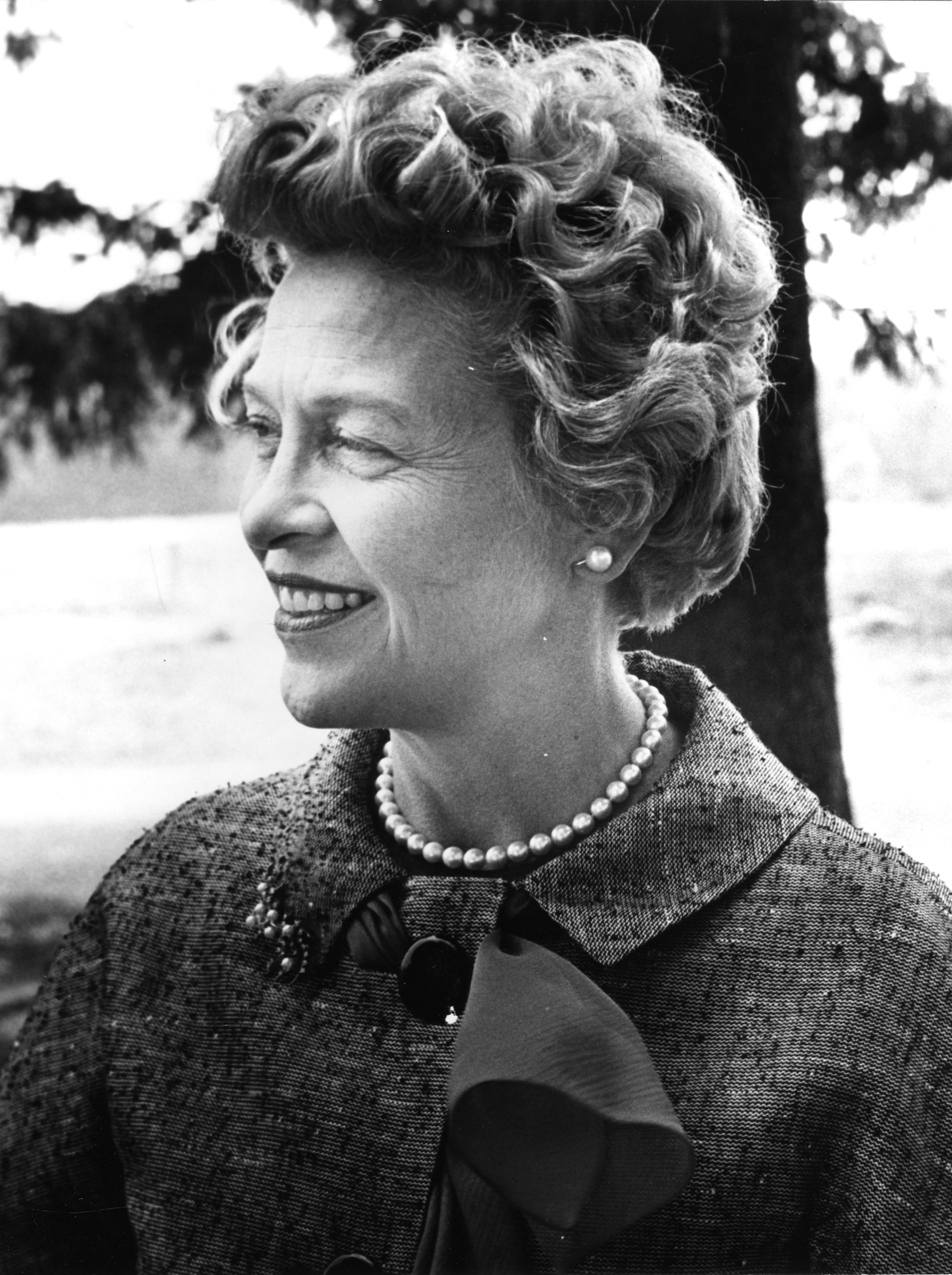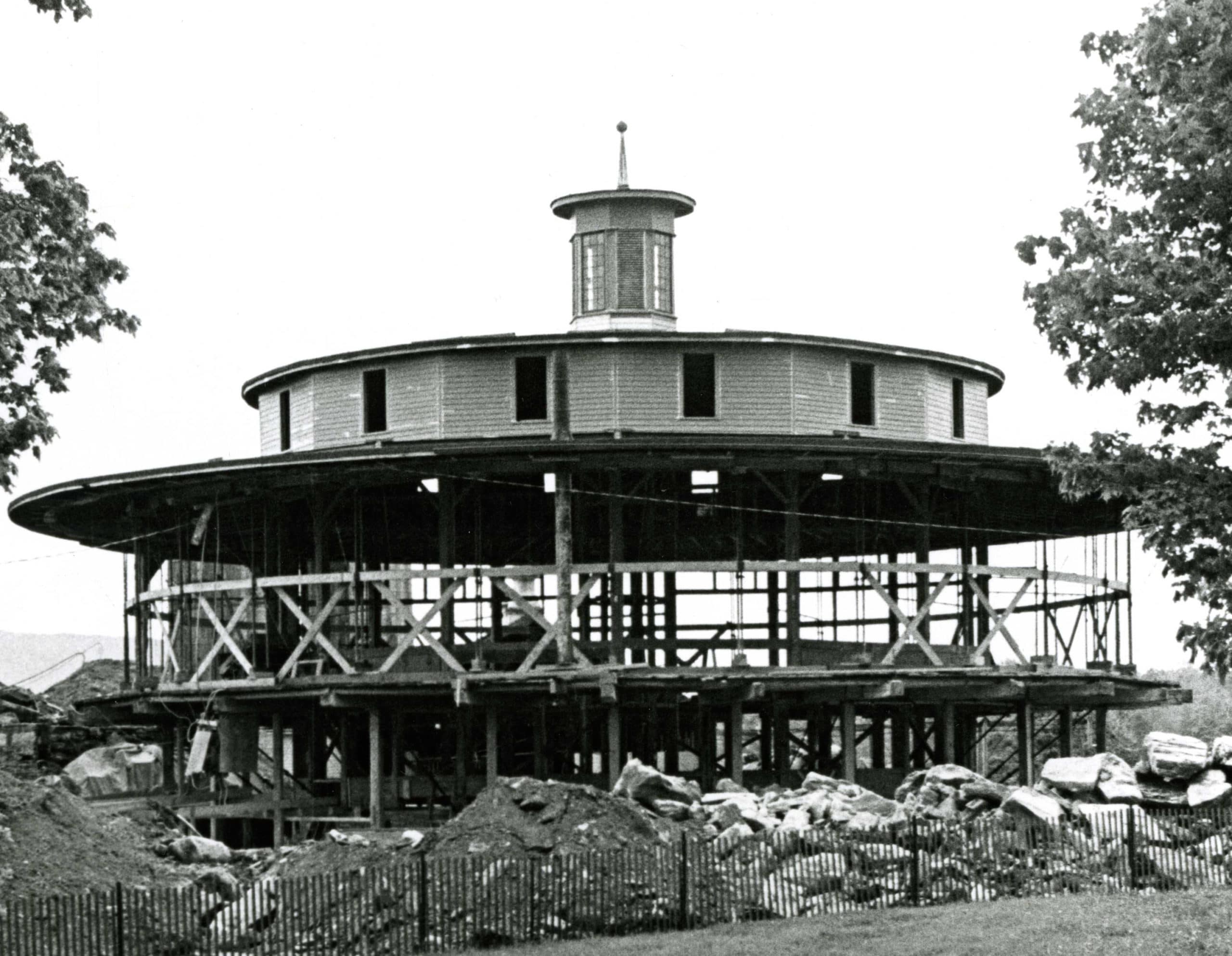Our tools are kind and gentle words,
Our shop is in the heart,
And here we manufacture peace
That we may such impart.
— “Our Trade,” 1872, Hancock, Massachusetts
The year 2020 marked the 60th anniversary of Hancock Shaker Village as a museum. Notes About Home is a poignant look back, connecting past to present as we envision the future. The exhibit is a dynamic collage of photographs, newspaper articles, posters, blueprints, oral histories, and videos. These moments weave together the museum’s growth from a fledgling organization to an established Berkshires landmark on the National Register of Historic Places. Through December 2021
Saving the Village

In 1960, the few Shakers remaining in Hancock decided to sell the property. They received competitive offers from a range of bidders, including a horseracing outfit with mob connections that proposed to raze all buildings except the iconic Round Stone Barn. Fearing the loss of such a significant cultural site, the intrepid Amy Bess and her husband Lawrence K. “Pete” Miller (1907–1991) struck an agreement with the Shaker Ministry in Canterbury, New Hampshire, to secure the future of Hancock Shaker Village in perpetuity as a living history museum.
“A seedy sight”

To create a comprehensive restoration plan, Amy Bess enlisted the expertise of Pittsfield-based collectors (and prominent Shaker scholars) Faith and Edward “Ted” Deming Andrews, local architect Terry F. Hallock, and others. Over time, Amy Bess and the Village’s supporters implemented a plan to restore the 17-building campus and install historic exhibits of Shaker materials throughout—even arranging for the disassembly of the Shaker Meetinghouse in Shirley and its reconstruction at Hancock.
The Museum Opens
On July 1, 1961, Hancock Shaker Village opened to the public, debuting the newly refurbished Brick Dwelling, Trustees’ Office, Sisters’ Dairy and Weave Shop, and Brethren’s Shop. An article in The New York Times declared that “the restoration will try to capture the old Shaker atmosphere of serenity and order in the grounds, buildings, and walks. For example, a long row of pink and crimson roses, much the same as those formerly grown by the Shakers for their famous rose water, will line the road.”
The photo shows a dedication ceremony, led by Amy Bess Miller.
Notes about Home is generously sponsored by Anonymous, Amanda Batey, Daniel A. Ford, Sharon Gamsin, Joel S. Greenberg, Dora and Noah Hanft, Darin Johnson and Greg Keffer, Keith and Elizabeth Morgan, Richard Pierce, Joanne Quattrochi in memory of Kathryn and Robert Quattrochi, Mary and F. Peter Rentz, Richard and Carol Seltzer, Lou and Susan Sweatland, William H. Vogt, Carter White, Michael Zaccaro, Jim and Jan Zilinski.



